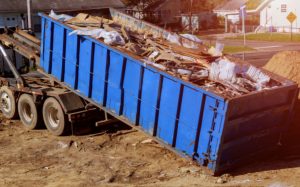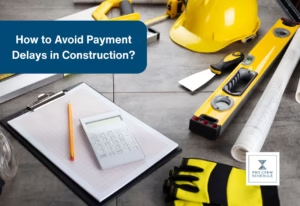Sustainable infrastructure will continue to be the trend this year 2020 and it isn’t just to save the environment. In the past years, the construction industry has been searching for new ways to increase their profit and found that by going “green,” they can definitely do so. This method of constructing buildings was also found vital in creating new jobs at the site as new building procedures and equipment will be used.
Sustainable Construction in Construction Firms
The primary financial goal of businesses is to make a profit. That said, using sustainable technologies like 3D printers that use construction waste as materials or BIM to more efficiently plan the operation to minimize waste is a great start to creating a bigger profit. Construction firms that invest in the latest sustainable technology can recoup those costs over time. Consequently, there will be a reduction in operational costs.
And as you know, the construction industry generates so much waste and requires so much energy to finish just one project. There will be heavy equipment and machines which rely on fuel to operate. And of course, electricity is needed. Overall, the construction industry accounts for approximately 36% of worldwide energy usage and 40% of C02 emissions.
One of the best ways to achieve sustainable construction and conservation of energy is through proper construction waste management. However, it has been a key area of concern within the construction and engineering sector up to the present. Landfills containing construction wastes are already overflowing everywhere. So it’s time to take salvage/reclamation opportunities, recycling or reusing materials, source reduction and waste disposal more seriously. And today, we’re going to walk you through some ways you can make use or reduce your construction waste.
Reducing Waste Disposal on Construction Sites
As we said, there are tons of wastes produced in construction sites. In the U.S. alone, it is estimated that over 251 million tons of solid waste are generated annually on construction sites. Only less than a third of this is being reduced or composted and the rest goes to landfills, polluting the land. Furthermore, unused building materials also add up to the total waste being handled by the industry. Following this, construction companies should take responsibility for the proper waste disposal on construction sites. So much of this amount can actually be recycled or even reused. Sustainable building practices are used to manage this much waste. Remember that an effective waste management plan is not only beneficial for the environment but for the profitability of construction companies as well. Some Other Benefits of Reducing Waste Disposal- Less landfills
- Less risk of pollutant incidents that can lead to litigation
- Lower CO2 emissions from producing, using and transporting waste • Cut material costs
- Increased efficiency of workers
- More opportunities to win more projects because more owners now prefer sustainable building approach
Ways to Reduce Construction Waste
1.Plan Ahead
Planning things carefully can help you reduce waste. And to effectively plan your project, you should use reliable construction project management software like Pro Crew Schedule to layout parts of your project and schedule equipment usage more efficiently. The use of construction project management software will also help you stay on top of your resource usage so that you know which materials are excessive in volume and which equipment is often on idle.
Using BIM can also help you look into the future of your project. It helps you determine problems early on so you can do your planning more accurately. Likewise, you can also estimate the materials you need more accurately with the use of BIM.
Thorough planning and proper organization mean fewer mistakes are made and result in fewer materials wasted on job sites. When you plan, make sure to look into these areas:
- Potential waste materials and volume
- Provide recycling, compost, and waste bins on the site
- Order only what you need
- Identify recyclable materials
- Educate workers on sorting waste materials
2.Choose Your Suppliers Wisely
Oftentimes, materials are wasted because of the poor quality of the items you purchased. Cheaper isn’t always the best. Always take time to look into several vendors before coming up with a decision. Your supplier must also be flexible in sorting the materials you need when your warehouse is already empty. Some firms tend to hoard materials because their supplier can’t assure them that they can provide the same material again in the future, which is normally the cause of wasted material.
3.Deconstruction Instead of Demolition
If the project you are going to work on involves demolition, then consider opting for deconstruction instead. Deconstruction is selectively disassembling a building, piece by piece to preserve materials, and eliminate waste. The salvaged materials can then be transformed into new valuable materials that can be sold to other firms or reused in your own project. Most of the times, they can be used as a raw material for 3D printing construction
Opting for deconstruction before demolition benefits more than just your waste disposal. It also helps aid public health care by reducing toxic airborne pollutants related to demolition.
4.Recycle Non-Reusable Materials
There are so many materials used on the site that can be recycled so placing recycling bins on the site or sent to a recycling facility for workers to sort materials respectively will help minimize the amount in your dumpster and ultimately reduces the waste your build creates. Some of the materials that can’t be reused but can be recycled are:
- asphalt
- baths
- brick
- concrete
- countertops
- carpeting
- cardboard
- drywall
- gravel
- metal
- plastics
- roofing
- sinks
- wood (untreated)
5.Reduce Packaging of materials
One of the biggest contributors to construction waste is the packaging of the materials which consists of about 10-12% of all construction wastes. Protecting new materials is necessary but you can instruct your suppliers to remove the nonessential layers of packaging to reduce waste.
As we mentioned too, you should find a flexible supplier that can deliver your materials only when you need them. This way, there’s no more need for packaging (unless the material is sensitive or liquid, like cement and asphalt) and there might be no need for you too, to rent or build an on-site warehouse.
Other ways to reduce your packaging wastes include:
- Purchase materials in bulk to avoid individual packaging
- Reuse recyclable containers like drums, crates, pallets, tubs, barrels, buckets.
6.Know Your Local Recycling
Look into construction recycling contractors or services and find out which materials they can take in, how much, and in what form. This is a way for you to skip setting up landfills (which is normally more expensive than recyclers) or do your own recycling process. Consider recyclers that accept mixed debris because it means you don’t have to sift through the debris.
7.Reuse Scraps to Save Using New Materials
Another way to reduce your waste is to use them. As much as possible, you should reuse materials so you can empty your waste bins and even save you money from buying new materials. To start with reusing scraps, you can place materials that are in good condition in another location to keep them safe and out of the way. Next is to examine scraps to see how you can reduce your waste when you cut the next materials. Finally, instruct your construction subcontractors to collect and save scrap at cutting and fabricating locations.
8.Organize Your Construction Site
Organizing your job site is crucial in reducing mistakes in handling materials. Placing clear labels to separate the recyclables and waste containers can prevent confusion and increase productivity on job sites. This will also help you reduce producing more waste by mixing scraps that shouldn’t be placed together like asphalt on the bin of wood. When your crew members do so, then all the wood scraps can no longer be reused and the asphalt can no longer be recycled. They now become new waste materials.
Conclusion
There are so many ways to achieve sustainability in your construction project and one of them is reducing waste. The less you throw away and the more you reuse materials, the less money you spend on waste disposal on construction sites. Start your proper waste disposal with a plan and the implementation of new habits can motivate a more eco-friendly construction site that can save you more time and money.





